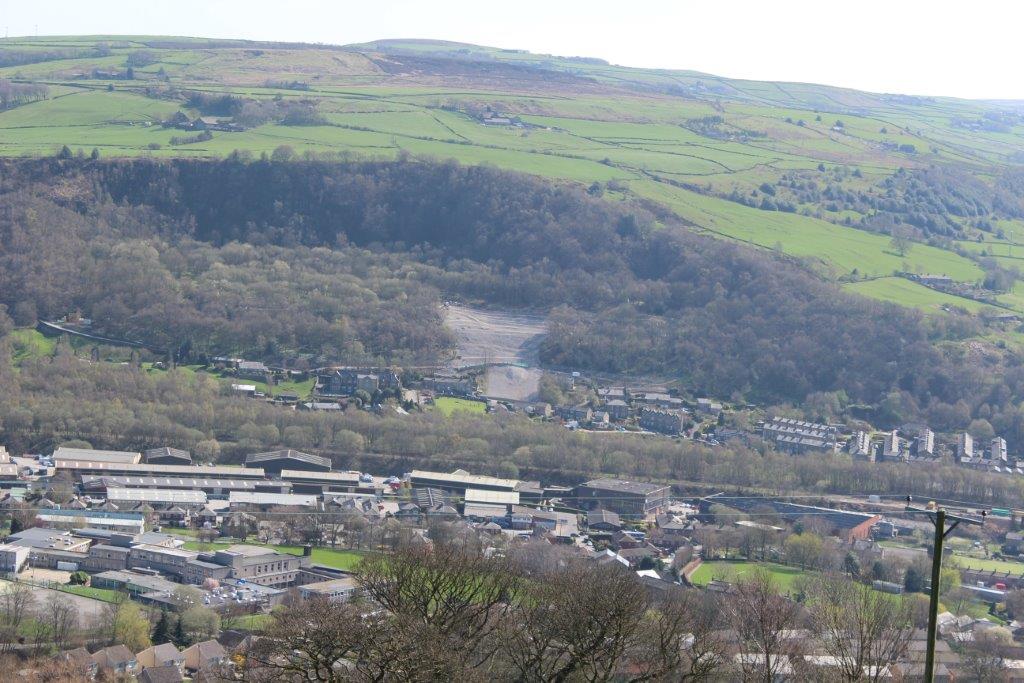
A £6.5 million project to strengthen the hillside, improve drainage and boost flood resilience at Scout Road in Mytholmroyd is now complete.
The Boxing Day 2015 floods caused a landslip which blocked Scout Road and led to the temporary relocation of Scout Road Academy and the evacuation of nearly 20 homes for safety reasons.
As part of its flood recovery work across the borough, Calderdale Council started a programme of repairs to help life get back to normal for local people as soon as possible, and to increase resilience against any future landslips.
The installation of a safety fence enabled the road to reopen and students to move back to Scout Road Academy in October 2016. Work since then has focused on permanently stabilising the hillside.
Cllr Barry Collins, Calderdale Council’s Cabinet Member for Regeneration and Economic Strategy, said:
“The completion of work at Scout Road is a key milestone in Calderdale’s recovery from the floods along with borough-wide flood alleviation schemes and a range of natural flood management projects, it’s a powerful example of our determination to build resilience against extreme weather events.
“We’d like to thank local residents for their patience and support during this huge, vital operation. It has been carried out to the highest possible standard and many of the techniques used have shown real innovation, leading to improved protection for over 80 nearby homes and around 30 non-residential properties.”
The work at Scout Road has been funded by the Department for Transport, designed by JBA Consulting Ltd (the principal designer) and delivered by Halls Construction Services Ltd (the principal contractor). Calderdale Council has acted as client and project manager throughout. The work has included:
- Preparing the site and making it safe before further works could take place. This included creating access roads for vehicles, clearing vegetation, carrying out noise and vibration surveys and relocating the electric pole on Scout Road.
- Installing a landslide barrier on the hillside to help protect the area from any further land movement. At the time of installation the fence, designed and manufactured by Geobrugg AG, was one of just two of its kind in the UK. At 250 metres long and 3.5 metres high, it is reported to be one of the longest fences of this style in the country. Originally intended as a temporary measure, it is now permanent to provide added protection.
- Approximately 500 steel soil nails and mesh have been installed into the slope to secure the hillside and the road where tension cracks had started to appear. The slope is so steep at some points that contractors had to abseil down it to carry out the works.
- Using the environmentally friendly method of soil mixing to mix binders into the soil on the hillside and reshape the slope to give the ground increased strength to prevent future landslips. After the landslip, intensive management of the site and continual monitoring was carried out by specialist contractors to ensure safety at all times.
- Deep Soil Mixing Ltd also installed a King Post Wall at the bottom of the affected area to create an anchor point for the stability of the slope. This was to ensure that any slips during the soil stabilisation works on the upper slope would be contained and would not affect the surrounding buildings and services.
- Replacing and improving the drains along the road and on the hillside to increase capacity and flood resilience.
- Constructing a stone wall in keeping with the surrounding features as a façade to a retaining wall located along Scout Road.
- Regularly updating the local community.
Robert McGall MD of Soil Stabilisation Specialist, Deep Soil Mixing Ltd added:
“Using our controlled soil mixing technique, Deep Soil Mixing has transformed this challenging site. Prior to commencement on site, Deep Soil Mixing Ltd undertook rigorous testing and assessment of the ground to assess its suitability for soil mixing.
“Laboratory tests were also undertaken using samples of the soil to be treated mixed with different proportions of a wide selection of binders to select the most appropriate mix.
“Soil Mixing has proved to be an ideal solution for this slope stabilisation project, but it can also be used in a wide variety of other applications. In addition to the environmental advantage, stabilisation of soft soils by adding binders to reduce settlements and/or improve the stability of the land can be both a quick and cost-effective solution.”
The final touches to the work in summer and autumn 2018 include landscaping and planting bushes to bring more greenery to the area and absorb water to improve flood resilience.
